The hidden corners of Britain to escape the crowds this summer
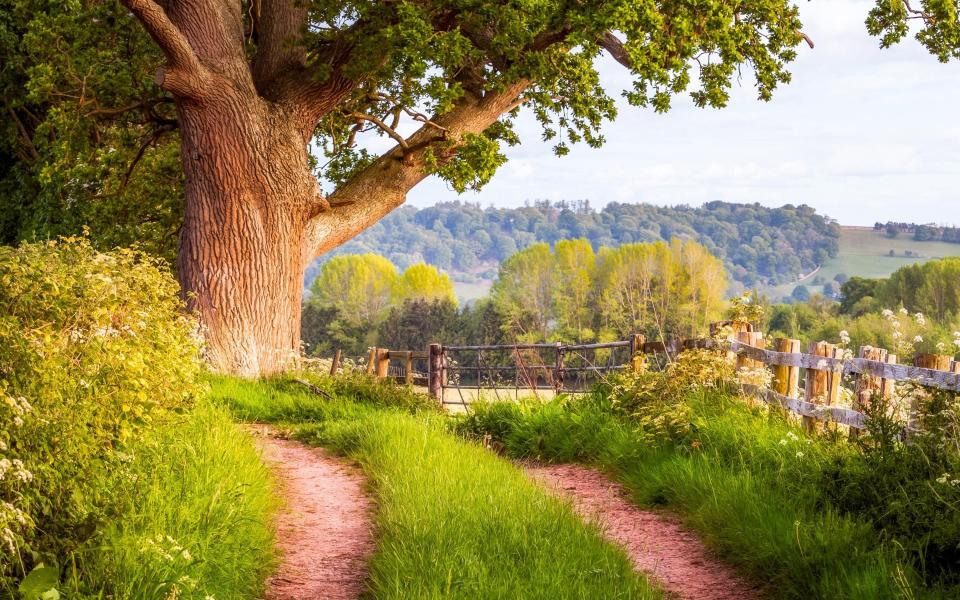
January, never a cheery month in the first place, is grimmer than ever this year thanks to the imposition of England’s third national lockdown. Trapped indoors until at least March, many will be keeping their spirits up by looking ahead to summer and the possibility of a holiday.
The question of where to go is a tricky one, however. Under lockdown, overseas holidays are banned. And, from Monday, travel corridors will be temporarily closed, a negative Covid test will be required to enter the UK and all arrivals will face a period of quarantine. Holidays abroad are looking increasingly complicated for 2021.
In response, many travellers are turning to domestic destinations, with tour operators already predicting a summer holiday shortage as demand builds. This also means that crowds will likely be in full force at the UK’s most popular spots this summer, as they were last year, posing a worry for anyone leery of putting themselves in the virus’ way. Or, in the critical eyes of the public. Huge amounts of bad press – and local backlash – was heaped on tourists in 2020 after reports of Cornwall, Bournemouth and more seemingly under siege from holidaymakers.
The answer, then, is to head for somewhere a bit less well-known. Here, we’ve compiled the most beautiful under-touristed parts of Britain to book a holiday this summer, that should be free from both crowds and judgement.
1. Herefordshire
Set in England’s West Midlands, Herefordshire is a criminally overlooked destination. The nearby Cotswolds draws visitors like a magnet, leaving the county empty of visitors – but there’s just as much to recommend Herefordshire.
Pembridge, for instance, is one of the county’s many ‘black and white’ villages. Recorded in the Domesday book in 1086, it has a long history stretching out behind it, most clearly seen in the medieval timber-framed buildings and 13th-century detached bell tower.
Bromyard, one of the many market towns, dates back to the 9th century, Castle Frome was owned by King Harold before the Norman Conquest – and takes its name from the Latin word for beautiful – and the charming timbered and thatched houses of Eardisland are set beside the backdrop of the River Arrow. An excellent 40-mile road trip, The Black and White Village Trail (blackandwhitetrail.org) can be done through them all picking up well-priced antiques and intriguing facts as you go.

Hereford, the county city, is also worth a visit, to see Mappa Mundi, a map of the world drawn on vellum about 1,300 and Coningsby Hospital, which contains a 12th-century dining hall used by the Knights of St John. Otherwise, the countryside is where Herefordshire really shines, filled with fields of yellow flowers, lush riverbanks and riotous hedgerows. Experience the best of the rural county by staying at the Netherwood Estate (netherwoodestate.co.uk), which has two historic holiday lets and a Michelin-starred restaurant on its bucolic grounds.
2. Berwyn Mountains
Think of Welsh hills and the mountains of Snowdonia tend to be the peaks that pop up most often. Sadly, this can be to the range’s detriment, with climbers clambering all over the place come summer. If you’re a fan of both Wales and long hikes, consider Berwyn mountains instead, which lie to the east of famous Snowdonia National Park. The range stretches all the way from Llangollen in the east, along the Dee Valley to Bala in the west, with the highest peak, Cadair Berwyn, standing at 830 metres. A hiker’s dream, the entire area – which contains 24 peaks above 600 metres – is full to the rafters with excellent walks, many of which can be done without seeing another soul.
The main routes are the North Berwyn Way and the Dee Valley Way, but for something special try one of the trails around Pistyll Rhaeadr, a beautiful waterfall with a tearoom nearby. To climb Cadair Berwyn, head to the village of Llanarmon, which has many footpaths leading to the top. Other walks leading out of the village will take you to leafy Ceiriog Valley, a mix of rivers and grasslands. Lake Vyrnwy in the south is a beautiful spot for picnics and water-based activities, with canoes and paddle boards available to rent.

3. Aberdeenshire
You’d think the wild expanse of Scotland wouldn’t struggle with crowds but as the country’s popularity has skyrocketed in recent years many of the more classic tourist attractions – like the Isle of Skye, Edinburgh and Glencoe – have become overrun with visitors. But overlooked Aberdeenshire on the north-east coast of Scotland still offers plenty of unpopulated terrain; it’s the fourth largest region in the country and spans 3,700 square miles. Small towns pepper the 165 miles of coastline. Visit Stonehaven for its picturesque harbour or Crovie, which is built into a cliff face.
There are also 263 castles, more per acre than anywhere else in the UK, with Dunnottar, the location of Zeffirelli’s 1990 film version of Hamlet, one of the highlights. Findlater Castle is also a spectacular sight, looking as if it’s being subsumed by the coastal cliff it sits on, while pink-hued Craigievar Castle is said to have inspired Walt Disney’s Cinderella castle.
One of the best ways to take everything in is to drive, with the North East 250 route (northeast250.com) being the most comprehensive, running through the Cairngorms National Park to Royal Deeside, through Aberdeen city, and up to Moray Firth and Speyside. A shorter option is the Aberdeenshire Coastal Trail, a 120-mile drive down the coast.

4. West Lake District
Surprisingly, the perennially popular Lake District can be a place to avoid crowds if you know where to go. The southern and central parts of the district throng with tourists every summer, but head west and you’ll find a serenely quiet spot with some of the region’s best views. Swap the tourist traps of Windermere for Wastwater in Wasdale Valley, England’s deepest lake. Surrounded by mountains, including Scafell Pike, it’s much harder to reach but is probably the most awe-inspiring of all the area’s lakes. A National Trust campsite (nationaltrust.org.uk) can be found at the Wasdale Head end of the lake, as can St. Olaf’s, the smallest church in the country and a pay-and-display car park. A second ‘honesty box’ car park is situated at Overbeck.
Slightly to the north-west is the glacial valley of Eskdale, which is best reached on the Ravenglass and Eskdale railway (ravenglass-railway.co.uk), which chugs through seven miles of scenic woods and ends in Dalegarth station by the village of Boot. Thrill-seekers equipped with a car can then take on the Hardknott Pass – a jaw-clenching road with multiple hairpin turns. At the end of it is Hardknott Roman Fort, a work of Hadrian’s, that offers brilliant views. Walk up Harter Fell and you’ll be rewarded with similarly beautiful views of the Eskdale Horseshoe. Head further west and you’ll hit the West Cumbrian coastline, which has a number of old Victorian seaside resorts, such as Silloth, Seascale, St Bees, and Allonby.
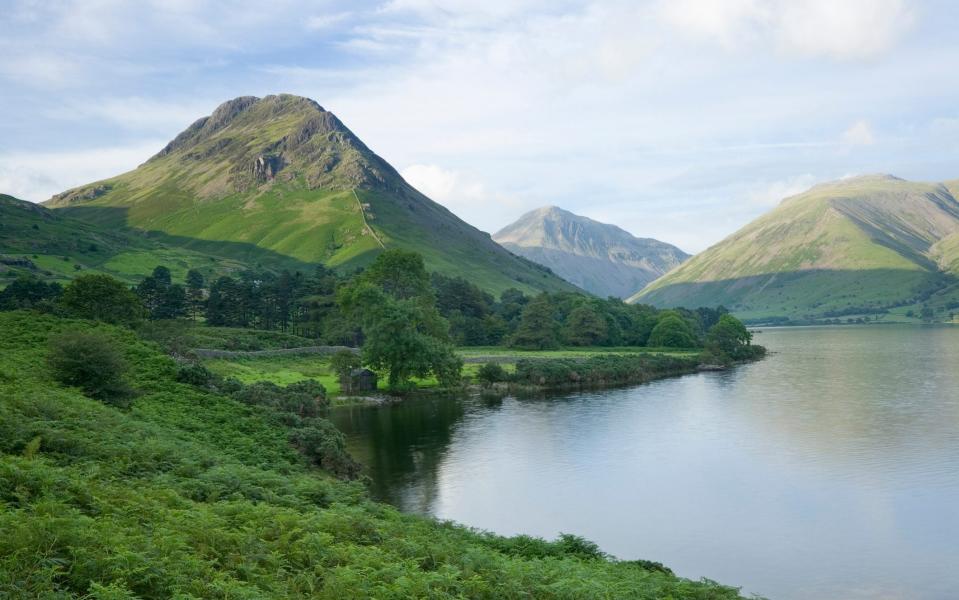
5. Mersea Island
Most Essex locals know and love Mersea Island, though few outside the county are as aware of this historic island’s charms. Sat nine miles south of the city of Colchester – another great Essex sight – the island covers seven square miles and is easily reached by road via The Strood causeway, first built by the Saxons, though be sure to time your trip with the tides. The road is covered by sea twice a day for one week of every month. Visitors follow in the footsteps of the Romans, who loved Mersea for its seaside views and native Colchester oysters, which are still farmed today off the coast.
Split into two parts, East Mersea is a bit more wild – bird-watchers will enjoy the over-wintering birds in easterly flats and plenty of walks can be had on Cudmore Grove Country Park – while West Mersea has more cosmopolitan flair, with a town centre and sailing club. If in self-catered accommodation, it’s worth going to the jetty, to buy the catch of the day off Mersea Island Fresh Catch. Though a bit pebbly, the best stretch of sand can be found at Monkey Beach, and traditional pastel beach huts line West Mersea Beach.
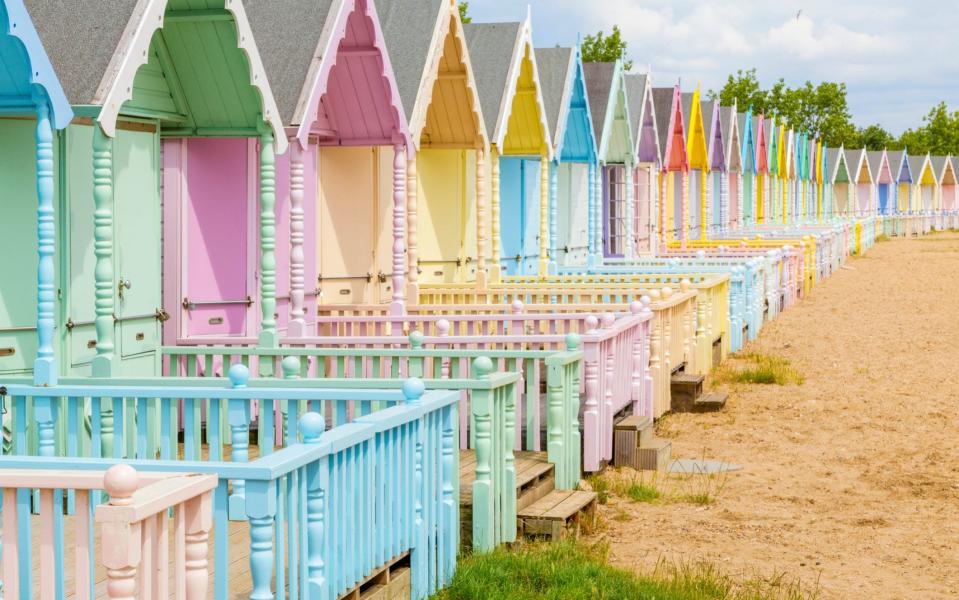
6. Yorkshire Wolds
Yorkshire’s dramatic Dales and Moors command plenty of attention, leaving the county’s lesser known Wolds (low hills) crowd-free. The area, which extends from the Humber estuary to the cliffs at Flamborough Head, offers an array of quiet scenery, and a National Hiking Trail that weaves through it all. It’s not as dramatic – Heathcliff’s Kathy may not have had as hard a time of it wandering here – but has its own kind of prettiness, with chalk hills, vividly green fields and gently sloping valleys that frequently appear in the paintings of David Hockney.
Stop off in Beverley, one of the best towns in the area, to see its 13th-century Minster (a rival to York’s). For a gourmet stay, look for The Pipe and Glass (pipeandglass.co.uk), a former coaching inn that now has nine boutique suites and a Michelin-starred restaurant.

7. Rutland
England’s smallest county offers a lot of the rural charm that brings people flocking to the Cotswolds year after year, without the crowds. The county’s motto, Multum in Parvo means ‘much in little’, a moniker Rutland lives up to. There are over 50 villages, many with thatched cottages and Georgian architecture, dotted about the countryside. Stoke Dry is of particular note, supposedly being where the Gunpowder Plot conspirators met to plan their ill-fated assault on Parliament.
Rutland Water, the UK’s largest artificial lake, is a majestic sight with Normanton Church looking out over the still waters. The man-made reservoir is near the village of Hambleton, home to excellent Hambleton Bakery, and the medieval county town of Oakham, which holds an extensive farmers’ market every third Saturday of every month – restrictions permitting. Local produce is deeply important to the county, with a food and drink trail specifically set up for visitors (discover-rutland.co.uk).
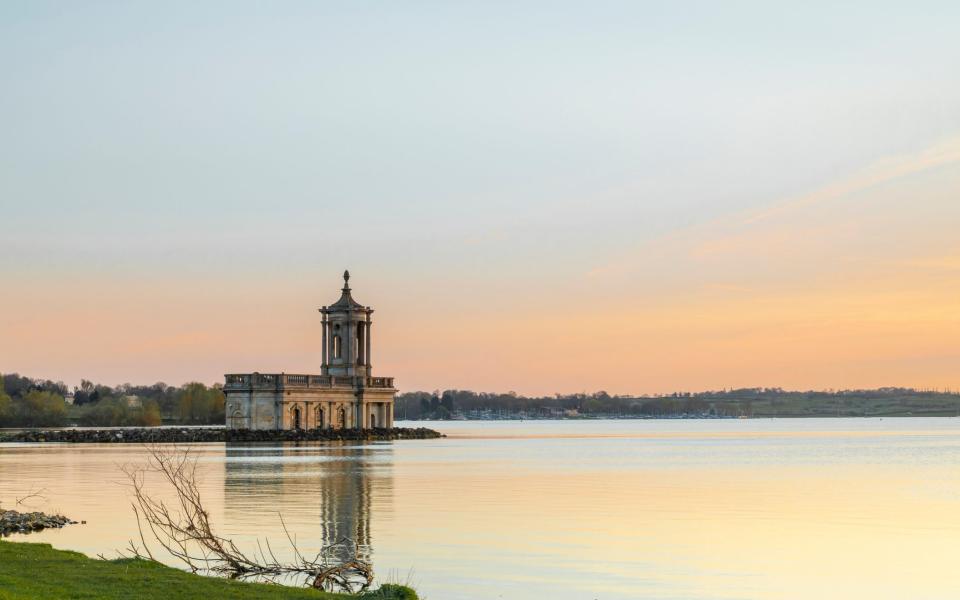
8. Argyll
For colours that rival the Caribbean, head to the islands just off the history county of Argyll in western Scotland. Temperatures are unfortunately nowhere near similar, but the clear waters around the Inner Hebridean islands of Mull and Iona are a particularly vivid aqua. The Argyll area counts 23 islands in total under its jurisdiction, many of which are gloriously empty of not just tourists, but people generally. The Isle of Jura, for instance, has a larger population of deer than people.
There’s plenty to see on the mainland too: scenic Loch Awe, though uninhabited by any famed monster, is surrounded by conifer forests and has the ruin of Kilchurn Castle. Climbing up the ruin’s tower gives a marvellous view of Ben Cruachan, Argyll’s tallest mountain. Other dramatic ruins can be found in Kilmartin Glen, which has Europe’s most concentrated patch of prehistoric remains – over 800 structures.
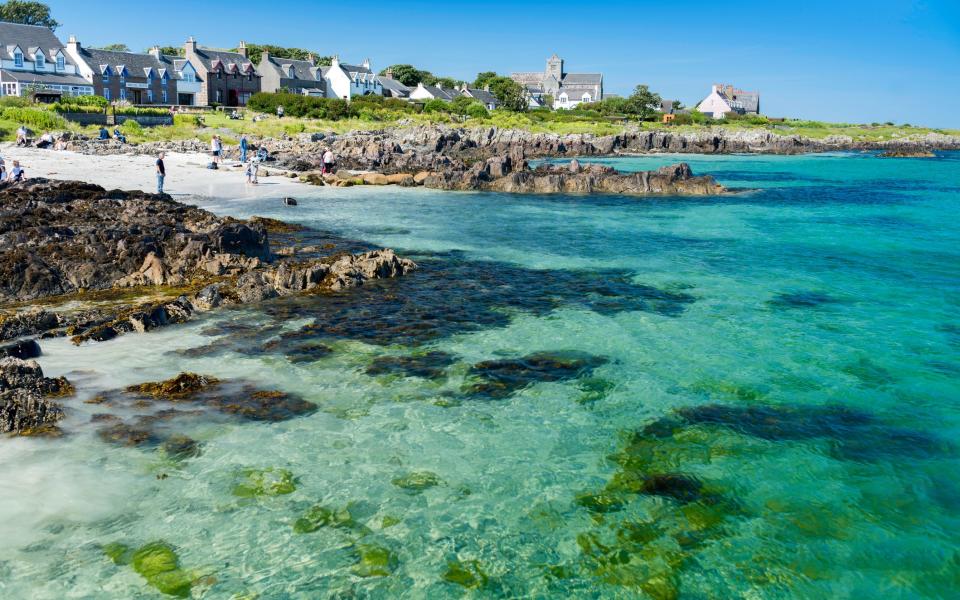
The best bit of Argyll, however, is the Cowal Peninsula. Nicknamed Scotland’s ‘secret coast’, this stretch of land is riddled with otherworldly sights. Puck’s Glen is a walk through the green moss-covered surrounds of a deep glen, Lock Fyne and Loch Long offer mirror-like waters flanked by towering hills, and Benmore (rbge.org.uk/visit/benmore-botanic-garden) is one of the UK’s most vividly dramatic botanic gardens.
9. The South Downs
Southern England, for all the popularity of Devon and Cornwall, still has plenty of coastline still relatively untouched by tourists. The South Downs National Park and its corresponding beaches are one such area. The Seven Sisters cliffs – supposedly even more dramatic and white than Dover’s – garner the most visitors, but outside of this major attraction you’ll find the rest of the park uncrowded.
A lot of English wines are produced here, and many vineyards offer tours and tastings. Try sparkling wine at Rathfinny Estate (rathfinnyestate.com) and Ridgeview Vineyard (ridgeview.co.uk), which has panoramic views over the Downs, or for something a little different Stopham Vineyard (stophamvineyard.co.uk) does Pinot Blanc and Pinot Gris, two examples of English still wine. Stay at Bailiffscourt Hotel (hshotels.co.uk/bailiffscourt), a property originally built in the 1920s by a Lord from the Guinness brewing family in meticulous medieval style that is now one of England’s best lesser-known spa hotels.

10. North Kent Coast
This area was home to Charles Dickens, who grew up in the Medway town of Rochester, a former Roman settlement. Alas, he wasn’t a fan; the town appears as "Mudfog" in The Mudfog Papers, and “Dullborough” in The Uncommercial Traveller. More fool Dickens. The town and wider coastline has plenty to recommend it, from Norman-built Rochester Castle, to the coast’s own set of chalk cliffs between Pegwell Bay and Ramsgate. Searching for sea-urchin fossils, crinoid stem parts, brachiopods and starfish plates along the beach below the latter makes a good afternoon activity for children. Herne Bay is similarly good for exploration, being the best place in England for finding shark’s teeth.
Around 400 years of British Maritime history can be found at the Henry VIII-founded Chatham Historic Dockyard, which was once England’s largest naval base. Ramsgate is similarly good for nautical history, being a former Royal Harbour. Botany Bay is one of the prettiest beaches in the area, with a smooth stretch of sand and dramatic chalk stacks flanking it. The area is also home to famed The Sportsman at Seasalter restaurant (thesportsmanseasalter.co.uk), which is a scant two miles from Whitstable.

